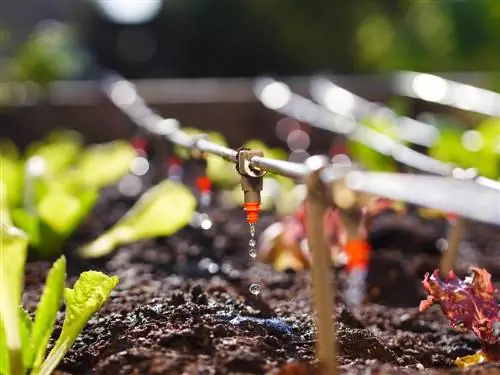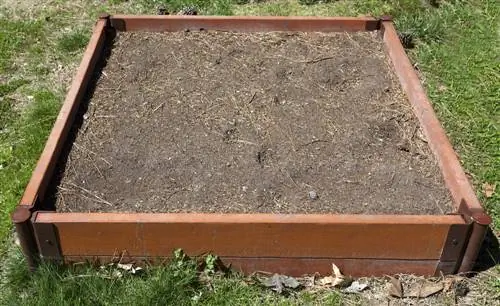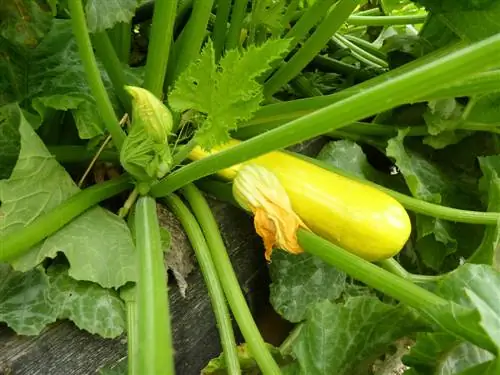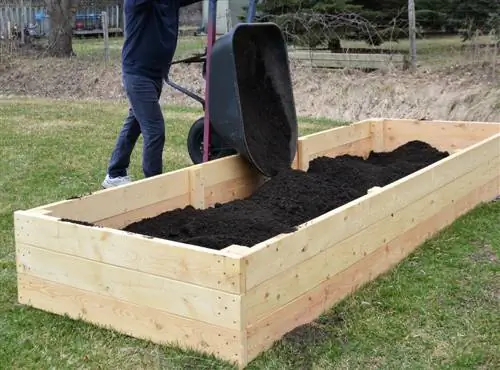- Author admin [email protected].
- Public 2023-12-16 16:46.
- Last modified 2025-01-23 11:21.
Raised beds are a practical invention: Vegetables grow particularly well here due to the warmth and abundance of nutrients, and gardening is easy because the height is easy on the back. However, a raised bed needs a lot of water and therefore depends on good irrigation.

How do I water a raised bed correctly?
To properly water a raised bed, use soft, warmed rainwater, water early in the morning, regularly and thoroughly from below instead of above. Avoid waterlogging and use drip irrigation for automatic watering.
How much water does a raised bed actually need?
In general, plants in a raised bed need more water than in an open field. This is mainly because they cannot support themselves through their roots in the ground, as it is simply too deep. The constant process of composting also uses a large part of the water. On the other hand, compost soil has a high water storage capacity; You can also keep the moisture in the bed by mulching it. The actual water requirement depends on various factors and therefore cannot be precisely stated: position of the sun, weather, intensity and frequency of rain, location and planting have a major influence. Some plants are significantly thirstier than others. Pay particular attention to these points when watering the raised bed:
- Preferably use soft and warmed rainwater.
- Water as early as possible in the morning.
- Watere regularly and thoroughly.
- Do not water in small doses (and more often!)!
- Then too little moisture reaches the roots.
- It's better to water less often, but more vigorously.
- Avoid waterlogging.
According to needs, but tiring: watering with a watering can
The easiest way to water a raised bed is to water it the classic way with a watering can. You draw the water from a rain barrel that you have secured with a lid - from playing children and curious pets, but also from breeding mosquitoes. If possible, do not use a shower attachment, as vegetable plants in particular should not be watered from above. Watering should always be done from below and evenly so that all roots of a plant receive enough water. If, on the other hand, you water from above, only a little moisture reaches the roots - and constantly wet leaves increase the risk of fungal infection.
I'd rather not: spray irrigation
A spray irrigation system is quick to build: all you need is a few pipes into which you can lay perforated garden hoses and connect them to a water source. However, although this form of irrigation is practical, it is completely unsuitable for a raised bed. Not only do the roots receive less water than needed, the leaves also remain constantly wet and can be affected by powdery mildew or another fungal disease. The same reasons that speak against watering from above when watering by hand also prohibit spray irrigation. This in turn is better suited for watering the lawn.
Suitable forms of automatic irrigation
Instead, you can also use drip irrigation for a raised bed, which you can lay using hoses and, if necessary, irrigation cones and connect to both a tap and a rain barrel. However, the water pressure should be high in both variants, so that a pump (€59.00 on Amazon) is useful here.
Tip
Automatic watering is also an advantage if you want to travel for a few days. With the right system, the supply of the plants is still ensured.






